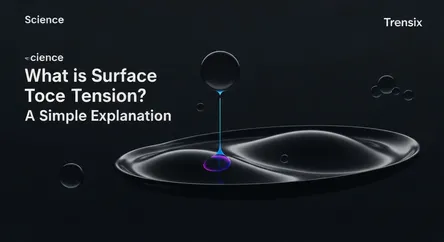Science
What is Surface Tension? A Simple Explanation

Discover surface tension, the property that lets insects walk on water and forms raindrops, and its importance in science and daily life.
What is it?
Surface tension is the tendency of a liquid's surface to shrink into the minimum surface area possible. It happens because the molecules within a liquid are attracted to each other (cohesion). At the surface, these molecules are pulled inwards by the molecules below them, creating an effect similar to a stretched elastic membrane. This "skin" is strong enough to resist external forces, which is why small insects like water striders can walk on water and why a paperclip can be made to float.
Why is it trending?
While a fundamental concept in physics, surface tension is crucial for advancements in various fields. In materials science and nanotechnology, understanding and manipulating surface tension is key to developing new coatings and waterproof fabrics. It is also vital in industrial applications, influencing the effectiveness of everything from detergents and paints to pharmaceuticals and food products. Ongoing research continues to explore its complex behaviors, leading to innovations in areas like microfluidics and enhanced oil recovery.
How does it affect people?
Surface tension has a significant impact on everyday life. It is the principle that makes soaps and detergents work; they reduce water's surface tension, allowing it to better soak into clothes and wash away dirt. It is also responsible for capillary action, the process that allows plants to draw water up from their roots and paper towels to absorb spills. From the spherical shape of raindrops to the way dew forms on leaves, this invisible force is constantly at play in the world around us.